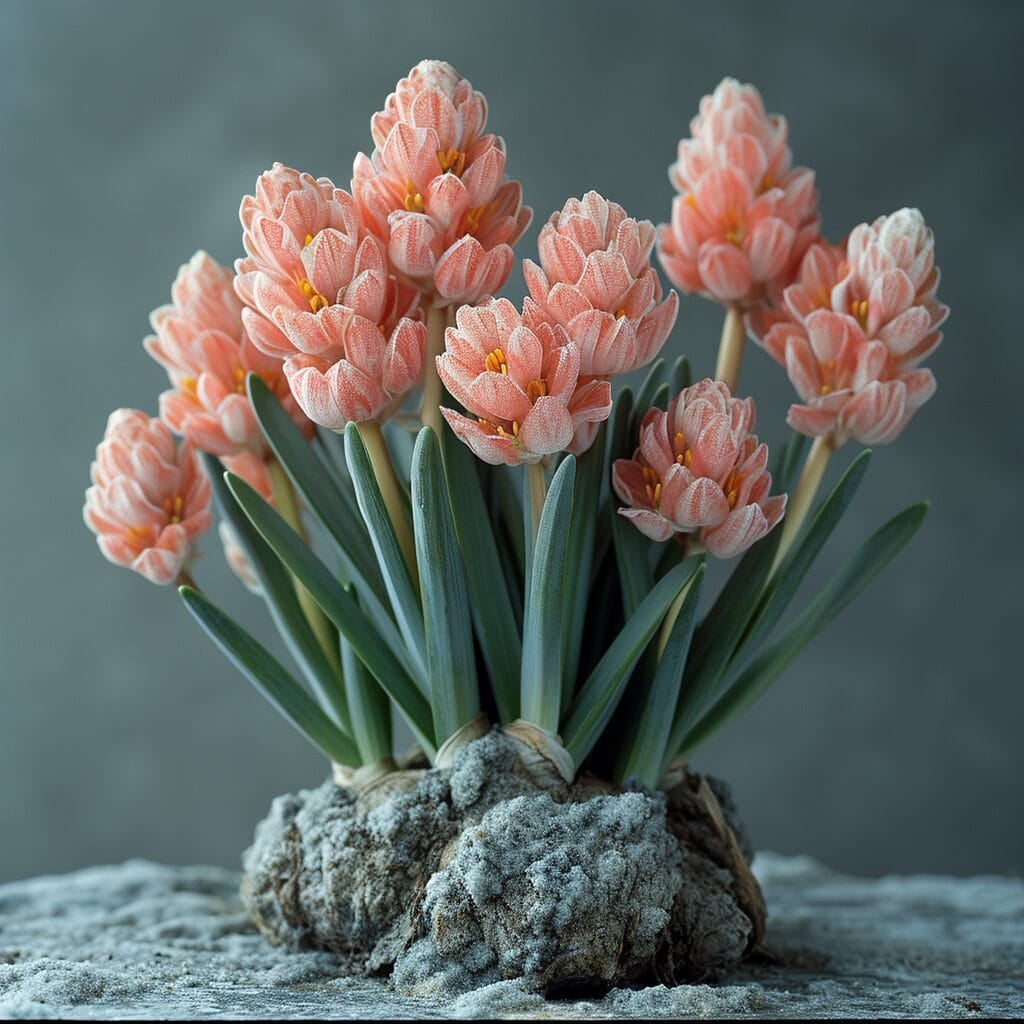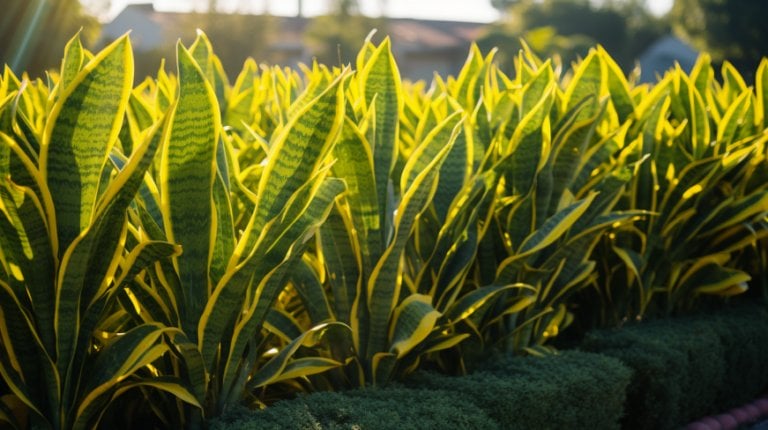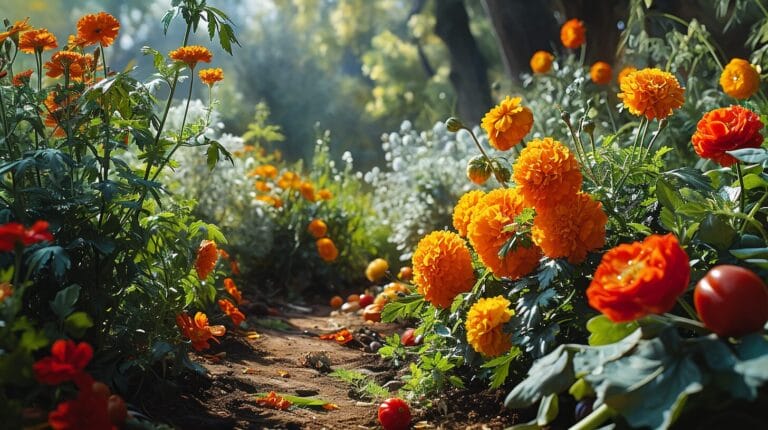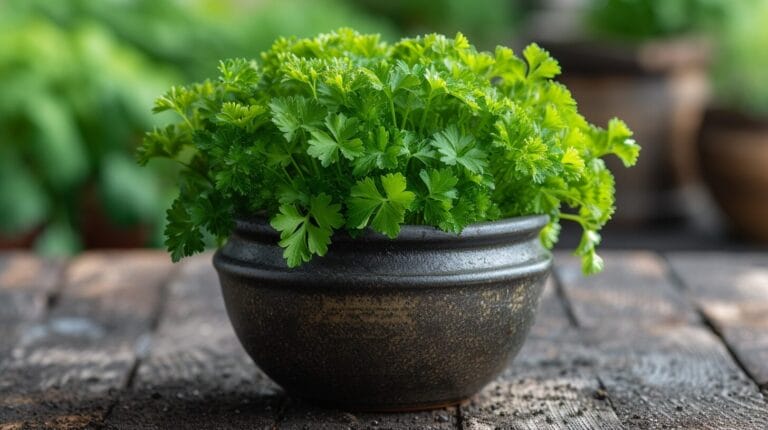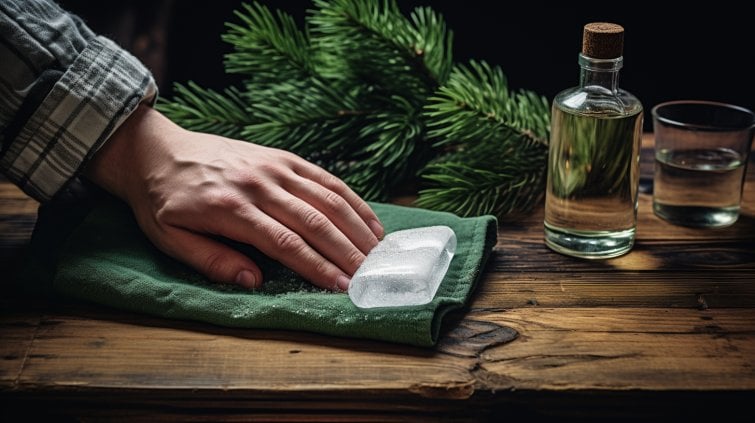Will Moldy Bulbs Still Grow: Overcoming Blue Mold in Flower Bulbs in 2024
As enthusiastic gardeners, we understand the apprehension that comes with spotting fungi on our valuable bulbs. We wonder, can our bulbs, now infested with blue mold, still blossom into robust and vigorous plants? We will dig deep into this discussion to determine if these diseased bulbs have the potential to develop into magnificent flowers irrespective of their existing state.
We’ll provide insights on how to identify the severity of mold, the conditions that enable recovery, and strategies for managing and preventing mold on your bulbs. Join us as we demystify the resilience of flower bulbs and the possibility of blossoms even when adversity strikes.
Key Takeaways
- Proper planting depth, well-drained soil, and starting with healthy bulbs are essential for flower bulb growth.
- Visual cues such as discoloration, musty odor, and spongy texture can reveal mold or rot in bulbs.
- Prevention strategies, including proper storage, cleaning mild blue mold, and discarding rotten bulbs, are vital.
- Timing of planting, assessing damage, and considering optimal conditions are key to overcoming mold in flower bulbs.
Understanding Flower Bulbs and Their Growth Factors
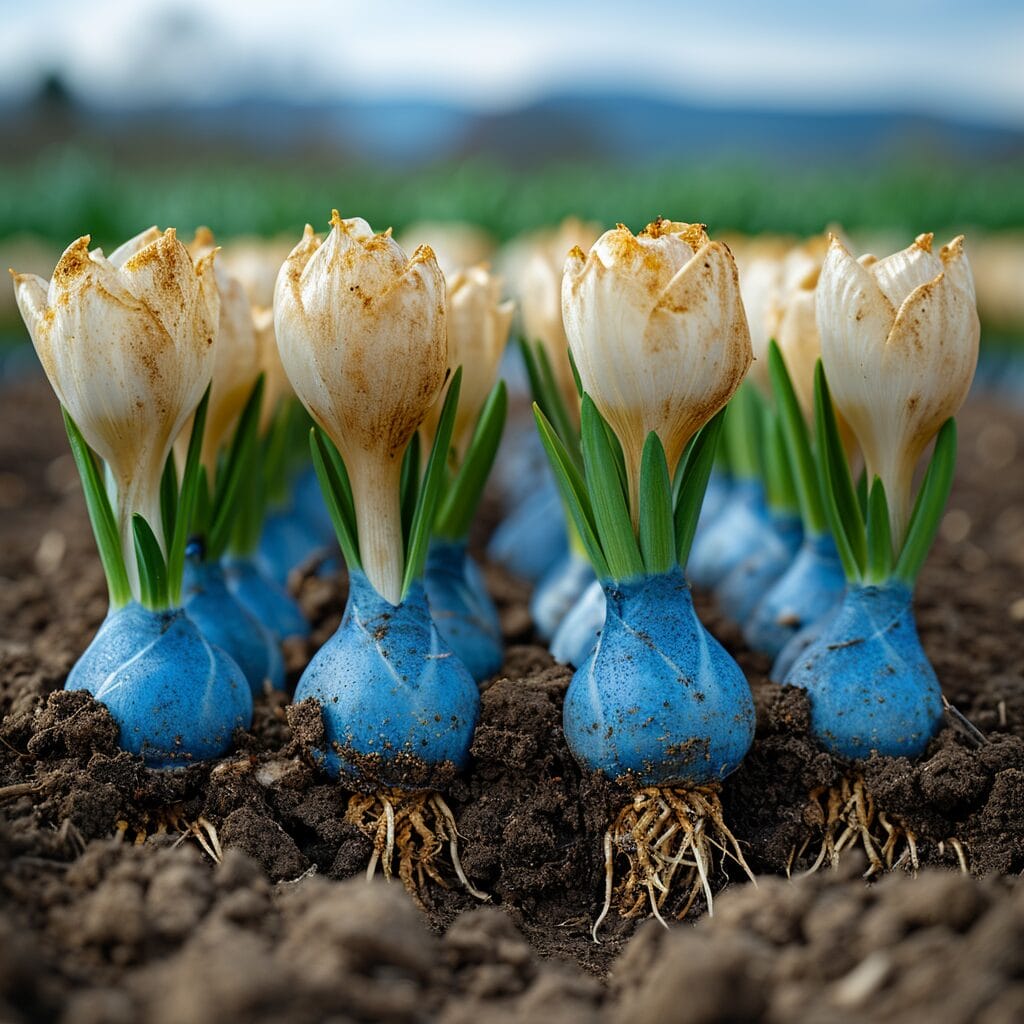
Flower bulbs flourish with the right mix of soil, water, and sunlight, but mold can disrupt their growth. Successful blooms begin with the health of the bulbs, emphasizing the importance of planting depth, well-drained soil, and the condition of the bulbs before planting.
Planting depth is critical—too shallow, and bulbs may be exposed; too deep, and they might not emerge. Well-drained soil prevents rot, and bulbs should be inspected for signs of mold or damage before planting. By managing these factors, we set the stage for spectacular blooms.
Identifying Moldy Bulbs and Assessing Their Viability

Recognizing when mold has compromised a bulb’s potential is essential. Here’s what to look for:
- Visual cues: Discoloration or a powdery blue-green substance often indicates blue mold.
- Smell and texture: A musty odor or spongy texture suggests rot, more serious than surface mold.
- Coverage: Minor spots could be superficial; extensive coverage may signal deeper issues.
- Firmness: A firm bulb is more likely to grow; a mushy bulb is often beyond repair.
- Root integrity: Intact roots increase the chance of survival.
We should assess these factors in totality. A bulb with a small amount of blue mold might still grow with proper care. However, those with rot should be discarded to avoid disease spread.
Prevention and Cure: Strategies for Dealing with Mold on Bulbs

Proper storage and treatment are crucial for preventing and managing mold. Keep bulbs in a cool, dry, ventilated space. Clean off mild blue mold and consider a fungicide for prevention. Discard bulbs with decay or a foul smell to protect others. Also, select hardy bulb varieties as a proactive measure against mold.
Timing the Planting of Moldy Bulbs: The Role of Seasonality
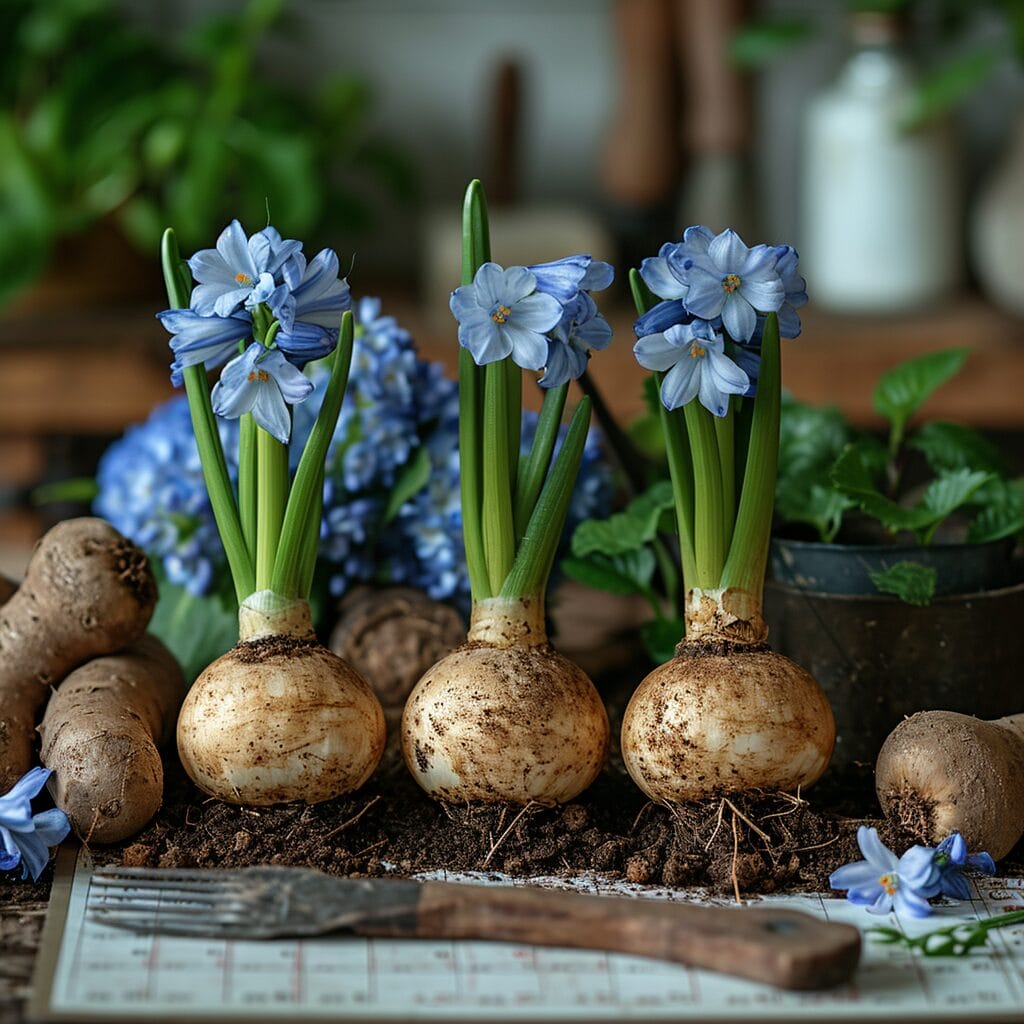
Seasons influence the recovery and growth of mold-affected bulbs. Consider the following when timing the planting:
- Spring bulbs: Plant in fall for a cold dormancy period before spring.
- Soil Conditions: Well-drained soil is crucial to prevent moisture-related mold.
- Temperature: Cooler temperatures can inhibit mold growth.
- Sunlight Exposure: Adequate sunlight helps fight mold.
- Damage Assessment: Don’t plant rotten bulbs.
Experiment and Learn: Real-Life Experiences with Moldy Bulbs
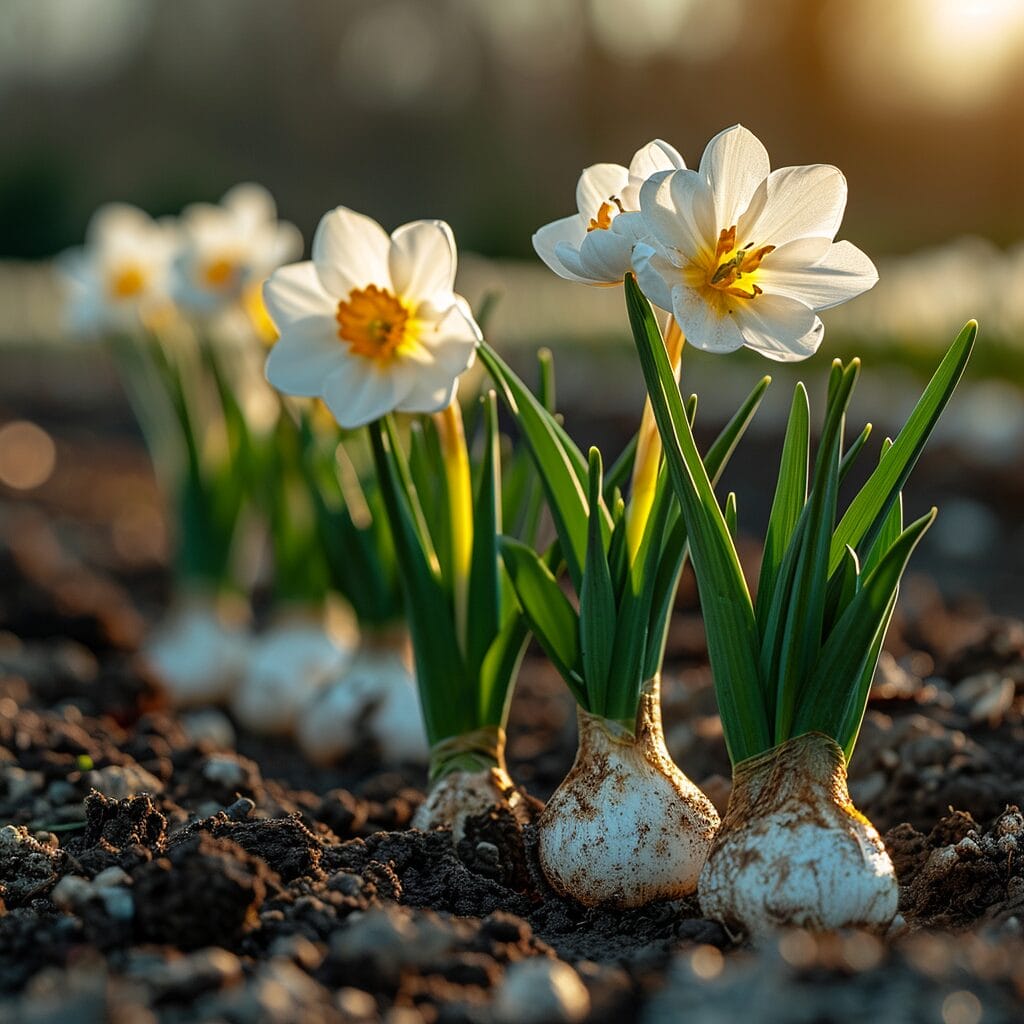
Gardeners have witnessed moldy bulbs both thriving and failing. Bulbs with blue mold often have a chance. The extent of mold coverage and the bulb’s firmness are key success indicators. While not a guarantee, it’s worth giving moldy bulbs a chance and learning from the experience.
Conclusion
Blue mold isn’t a death sentence for bulbs. With proper identification, treatment, and prevention, your garden can remain vibrant. Timing and nature’s resilience are often the best remedies.
Let’s continue to share our gardening successes and setbacks. Here’s to plentiful gardens and the wisdom they bring!
Frequently Asked Questions
Can You Plant Bulbs With Mold on Them?
Yes, but success varies. Firm bulbs with minor mold may thrive, while those with severe mold likely won’t.
How Do You Get Rid of Blue Mold on Tulip Bulbs?
Typically, blue mold doesn’t require removal, but keep bulbs dry and well-aerated to prevent it.
What Is the Blue Mold on Bulbs?
Blue mold on bulbs is usually Penicillium, a less harmful type that often doesn’t need treatment.
Will Moldy Bulbs Still Grow and How Do You Remove Mold From Flower Bulbs?
Possibly but it’s not like a terminal illness. Just gently brush off the mold and store the bulbs in a cool, dry place to prevent further growth.

